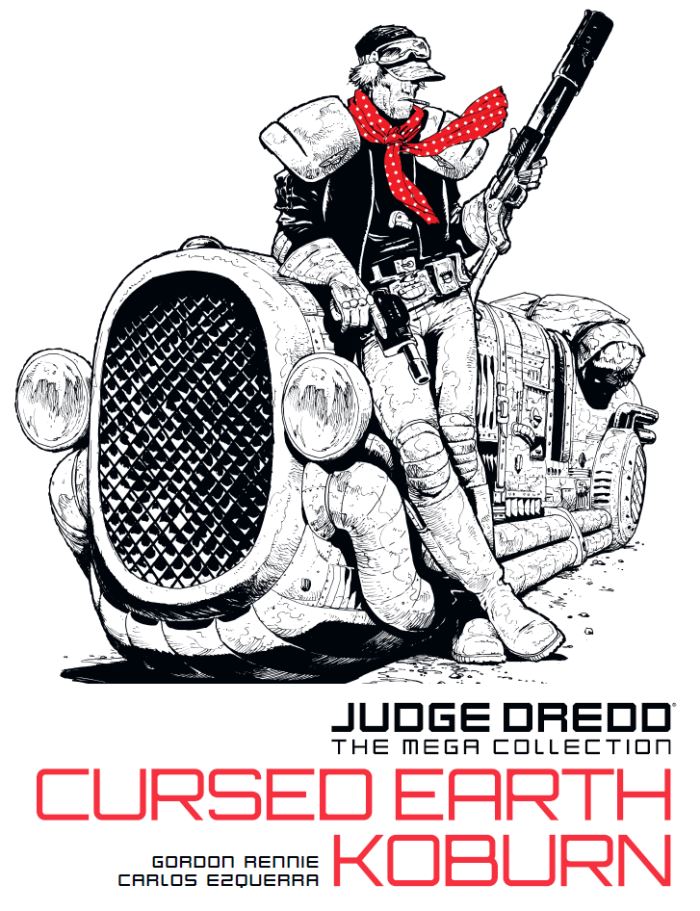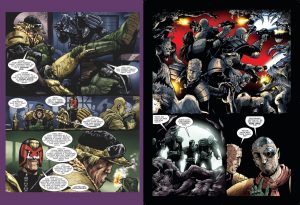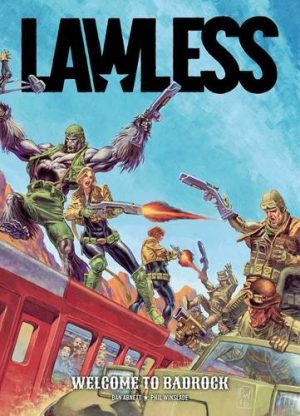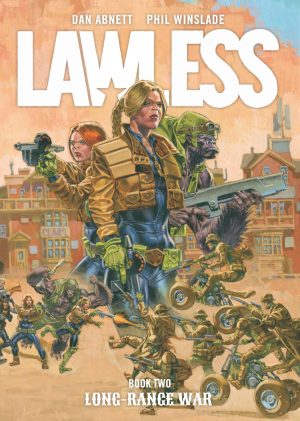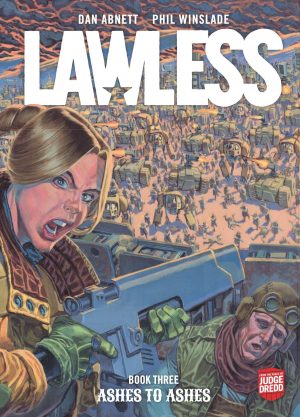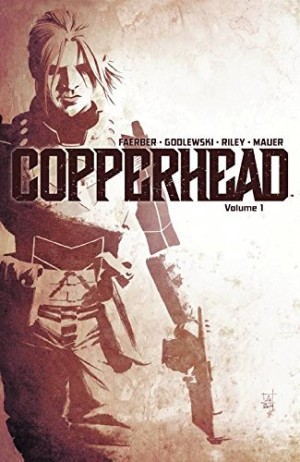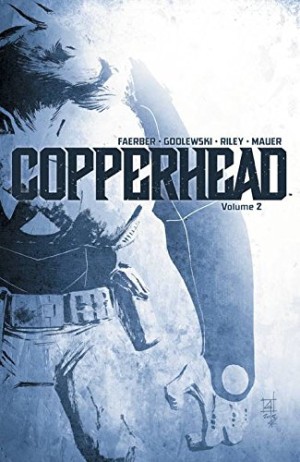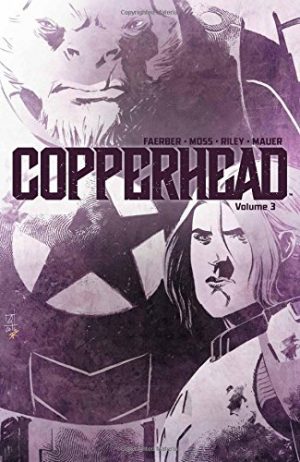Review by Frank Plowright
Judge Koburn serves out his days in the mutie-infested radlands of the Cursed Earth, having noised up the wrong people, as we discover. In preference to starting with an origin story that’s not greatly relevant, Gordon Rennie begins with Koburn already in the Cursed Earth, and already at odds with Judge Dredd, the sample art supplying when he’s first seen, everything almost calculated to get under Dredd’s skin.
To older readers Cursed Earth Koburn is an obvious homage, but the strength of Gordon Rennie’s plots means you don’t have to know anything about cool 1960s movie actor James Coburn, nor that Carlos Ezquerra had already drawn one homage casting him as war hero Major Easy. It could also be viewed as Rennie taking a redemptive leap alongside Koburn, having some unfinished business in the Cursed Earth as despite Frank Quitely art early in his and Rennie’s career, Missionary Man was patchy.
From the start Rennie imports the sly background humour of Dredd strips, teaming him with Koburn to see off a bunch of idiots whose expansionist ideology is based on translating Mein Kampf. It establishes Koburn as someone who cares about the law, just not the rules that go along with it, which could be taken as the internal battle experienced by believers when it comes to organised religion. Koburn is eminently capable and diligent despite his iconoclastic attitude, and as entertaining as it is seeing him play off Dredd, Rennie knows not to drive the joke into the ground, and Dredd’s appearances thereafter are sparing.
Ezquerra also seems to be enjoying himself greatly. He fills the pages with eccentrics, designs a great hover bike for Koburn, relishes the scenes where it’s used, and doesn’t oversell the comedy. Most stories are set before Ezquerra’s late period experiments with digital art.
The plots are straightforward enough Westerns, brought to life by the fixings. Rennie uses Clint Eastwood’s on-screen attitude as the basis for a succession of smart one-liners, and assigned partner Bonaventura as the foil, at first appalled by Koburn’s unorthodox methods, but coming to understand that beneath the attitude he cares about protecting people. Two single chapters, one of a wake, the other of Koburn applying judgement in a remote community cement the tone before Rennie starts longer serials.
Closer ‘Going After Billy Zane’ is the weakest effort. Koburn is reduced to an ensemble player, and his unique personality is reduced to Cursed Earth knowhow as he accompanies Rico Dredd’s search for a City Defence unit missing on training manoeuvres. Their experiences occupy half the pages of the five chapters, and they’re not interesting enough to carry what are weird war sequences. Also disappointing is the art being Ezquerra’s pencils inked by Hector Ezquerra. While the action layouts survive, the inking removes some of Ezquerra Senior’s appealing lumpiness, and the pages don’t look as interesting. It seems Rennie is setting up a further story, but when Koburn eventually returned years later it was with a different creative team.
Most of this collection is entertaining SF Westerns, but Rennie seems to have lost interest by the end, and because the final story is the longest it drags down the overall rating.
As of writing, Rennie’s Koburn adventures have only all been collected in this hardcover edition as part of the Judge Dredd Mega-Collection, although the better material raised the quality of Judge Dredd: The Carlos Ezquerra Collection.
